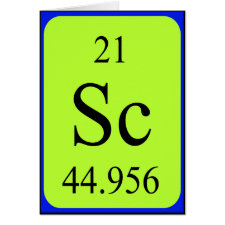
Authors: Patra S, Roy E, Das R, Karfa P, Kumar S, Madhuri R, Sharma PK
Article Title: Bimetallic magnetic nanoparticle as a new platform for fabrication of pyridoxine and pyridoxal-5'-phosphate imprinted polymer modified high throughput electrochemical sensor [RETRACTED].
Publication date: 2015
Journal: Biosensors and Bioelectronics
Volume: 73
Page numbers: 234-244.
DOI: 10.1016/j.bios.2015.06.005
Alternative URL: http://www.sciencedirect.com/science/article/pii/S0956566315301755
Abstract: The present work describes the fabrication of a selective and sensitive molecularly imprinted polymer (MIP)-based electrochemical sensor using a combination of surface imprinting and nanotechnology. The fabricated sensor was used for the detection of two major components of vitamin B6 i.e. pyridoxine (Py) and pyridoxal-5'-phosphate (PLP) using the same MIP format. Herein, acrylic acid modified zero valent iron nanoparticles were combined with the copper nanoparticle, resulting in vinyl groups modified bimetallic Fe/Cu magnetic nanoparticles (BMNPs). These BMNPs have high surface to volume ratios, higher electro-catalytic activity, and are-átherefore, a suitable platform to synthesize specific MIP cavities for Py and PLP. Herein, two different MIP formats (for Py and PLP) were synthesized on the surface of vinyl silane modified pencil graphite electrodes by activator regenerated by an electron transfer-atom transfer radical polymerization (ARGET-ATRP) method. The sensor shows a good analytical performance for the detection of Py and PLP by a square wave stripping voltammetric technique (SWSV). The limit of detection (LOD) was calculated to be 0.040 μg L-1 and 0.043 μg L-1 for Py and PLP, respectively, at signal to noise ratio of 3. The sensors are highly selective for the templates and can detect them from multivitamin tablets, corn flakes, energy drinks, cerebrospinal fluid (CSF) and blood samples (serum, plasma and whole blood) without any interfering effect, suggesting the clinical applicability of the fabricated sensor. The sensor can also be used as better alternative to the commercially available ELISA kits which are rather complex, less sensitive and difficult to handle
Template and target information: vitamin B6, pyridoxine, Py, pyridoxal-5'-phosphate, PLP
Author keywords: pyridoxine, Pyridoxal-5'-phosphate, surface imprinting, Bimetallic magnetic nanoparticles, ARGET-ATRP, Real sample analysis



Join the Society for Molecular Imprinting

New items RSS feed
Sign-up for e-mail updates:
Choose between receiving an occasional newsletter or more frequent e-mail alerts.
Click here to go to the sign-up page.
Is your name elemental or peptidic? Enter your name and find out by clicking either of the buttons below!
Other products you may like:
 MIPdatabase
MIPdatabase









